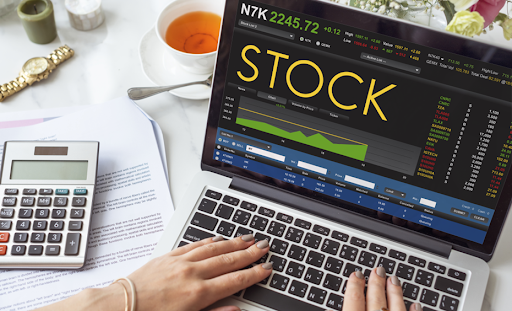
Traditionally, stock market investing has been a means of generating wealth. Nonetheless, new tools like Contract for Difference (CFD) trading have become more well-known as the financial markets continue to change. A comprehensive understanding of CFDs is not only helpful but also essential for inexperienced investors who are keen to explore alternative investment options. This thorough article seeks to explain the mystery surrounding CFD stocks trading by providing in-depth explanations of its workings, advantages, risks, and the essential steps required to embark on this financial journey.
Traditionally, stock market investing has been a means of generating wealth. Nonetheless, new tools like Contract for Difference
Understanding about CFDs
A financial term known as a Contract for Difference, or CFD, enables traders to make predictions about the changes in value of different assets without really holding the underlying asset. CFDs are a flexible financial instrument since they offer the chance to profit from both rising and declining markets, in contrast to traditional stock trading.
Key Features and Characteristics of CFD trading
Leverage: By utilising leverage, CFDs allow traders to increase their market exposure and increase profits. It is imperative to understand, nevertheless, that leverage also raises the possibility of losses.
Speculative Nature: Trading CFDs is by its very nature speculative, necessitating a deep comprehension of market dynamics. Making informed decisions requires novice investors to research market trends and data regularly.
No Ownership: CFD traders are not the actual asset owners, in contrast to traditional stock traders who hold a physical share in a company. Instead, they engage in a contract with the broker based on the asset’s price movements.
Benefits of Trading CFD Stocks
Opportunities and Risks with Leverage: It is essential to grasp the intricacies of leverage. Although it can increase profits, it also puts traders at greater risk. Leverage in CFD trading reduces possible losses. Thus, effective risk management becomes crucial.
Wide Range of Market Entry: One of the notable advantages of CFD trading is the access it provides to a diverse range of markets, including stocks, indices, commodities, and currencies. This diversity empowers investors to create a well-rounded and diversified portfolio, spreading risk across different asset classes.
Short Selling: The opportunity to profit from declining markets through short selling is an intriguing feature of CFD stock trading. In this approach, an asset that the trader does not own is sold with the expectation that its value will decrease. After that, the trader can benefit by repurchasing the asset at a discounted cost.
Risks and Challenges in CFD Stock Trading
Market Volatility: A number of factors, including economic statistics, geopolitical developments, and market sentiment, can cause the CFD markets to be extremely volatile. Inexperienced investors should employ techniques to properly control volatility and be acutely aware of the potential influence that market changes may have on their investments.
Margin Calls: The idea of margin calls was introduced by the use of leverage in CFD stock trading. It is imperative that traders comprehend the significance of upholding sufficient margin levels in order to prevent forced position liquidations, which may lead to substantial losses.
Lack of Ownership: Although, in some cases, not owning the underlying asset can be advantageous, it also entails giving up rights to dividends and shareholder voting rights. When trading CFDs, investors should carefully examine the consequences of not owning anything.
How to Begin Trading CFD Stocks
Selecting a Trusted CFD Broker: Choosing a trustworthy forex trading platform is an essential first step. A few things that investors should think about are available markets, trading fees, regulatory compliance, and the platform’s overall quality. Conducting extensive research is essential to provide a safe and open trade environment.
Setting Up a CFD Trading Account: Creating a CFD trading account is a systematic procedure that includes funding choices and identification verification. In-depth instructions on account setup are provided in this part to make sure investors are prepared to use their trading platforms efficiently.
Developing a CFD Trading Strategy
Value of a Trading Plan: The key to success in CFD trading is having a well-thought-out trading plan. This strategy should include precise trading methods, financial goals, and risk tolerance. It acts as a road map to help investors navigate different market circumstances.
Technical and Fundamental Analysis: To make wise trading judgements, one must comprehend technical and fundamental analysis. While fundamental analysis examines the performance and financial health of the underlying asset, technical analysis focuses on price charts and patterns.
Risk management: Long-term success in CFD trading depends on the application of efficient risk management techniques. This entails adjusting position sizes cautiously, diversifying the portfolio, and placing stop-loss orders. Protecting capital and reducing possible losses are the objectives.
Conclusion
Trading CFD stocks presents a distinct set of opportunities and difficulties for investors. Novice investors can confidently navigate the CFD market by knowing its mechanics, hazards, and tactics in detail. It is essential to approach CFD trading cautiously, to invest time in study, and to think about consulting a specialist. Even while investing in the financial markets can be profitable, long-term success requires a focused and knowledgeable strategy.
Interesting Related Article: “Stocks and Stakes: A Financial Perspective on Balancing Investments and Cryptocurrency Gaming“














